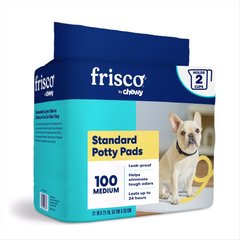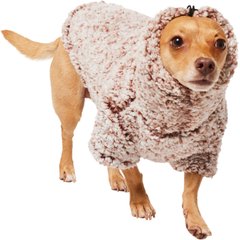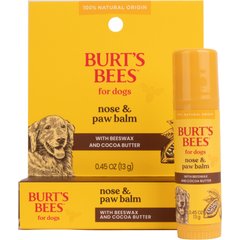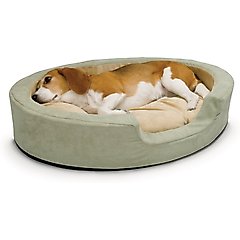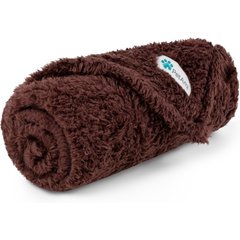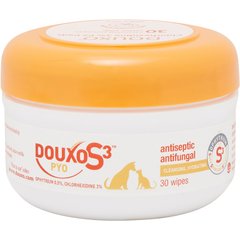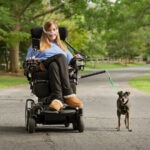How To Keep Your Dog Safe During a Blizzard

Photo by Chewy
When the snow starts falling and temperatures drop, your dog relies on you to keep them nice and cozy.
Blizzards can bring freezing winds and icy sidewalks, but with a little preparation, you can ensure your bestie stays warm and protected no matter how harsh the storm gets.
Key Takeaways
- Stock up on winter essentials like pee pads, dog coats, and paw balm before the storm hits.
- Limit outdoor walks during extreme cold and keep them short to protect your dog from frostbite and hypothermia.
- Create a warm indoor space where your dog can rest comfortably away from drafts and cold floors.
- Pay close attention to your dog’s paws, hydration, and comfort—winter weather can quickly take a toll.
How To Keep Your Dog Safe During a Blizzard
Here’s how to get ready for snow season and keep your dog happy all winter long.
Have Pee Pads Ready To Go
When blizzards make outdoor potty breaks impossible, having pee pads on hand can be a lifesaver. Hypothermia and frostbite are possible when the temperature is less than 20 F.
Keep them in a designated spot and reward your dog for using them.
Recommended Product
Buy Snow Gear Ahead of Time
Snowstorms can strike unexpectedly, so stock up on winter gear before you need it. A cozy dog coat can help retain body heat, while insulated boots protect paws from ice and salt.
Recommended Products
Reflective accessories, like Frisco’s Reflective Dog Collar and Reflective Rope Dog Leash, also boost visibility during dark, snowy walks.
Recommended Products
Take Care of Your Dog’s Paws
Ice, salt, and freezing temps can be harsh on your dog’s paw pads. Before heading outside, apply a protective balm, like Musher’s Secret Paw Protection, to create a barrier against irritants. After walks, gently wipe paws clean with a dog-safe wipe, like Earth Rated Grooming Wipes, and inspect for cracks or irritation.
Recommended Products
Create a Warm Space Indoors
Keep your dog’s bed away from drafts, doorways, and cold tile floors. Cozy options like orthopedic beds, such as the Frisco Plush Orthopedic Pillowtop Dog Bed, or heated pet beds, like the K&H Pet Products Thermo-Snuggly Sleeper will help them stay snug.
Recommended Products
Layer soft blankets in their favorite spots, and make sure they always have a warm, dry place to curl up.
Recommended Products
Watch for Signs of Cold Stress
Even brief exposure to cold can cause discomfort. Shaking, whining, or lethargy can indicate your dog is too cold.
Small, short-haired, or senior dogs are especially vulnerable, so limit their outdoor time and always supervise them while they’re playing or peeing outdoors.
Keep Them Hydrated
Winter air is dry and heaters can make it worse. Encourage hydration by refreshing your dog’s water frequently or using a heated bowl like the K&H Pet Products Thermal-Bowl.
Recommended Product
Proper hydration supports circulation and helps your dog regulate their body temperature, which should ideally be around 101.5 F.
Prepare an Emergency Kit
Blizzards can cause power outages, so it’s wise to have a dog-friendly emergency kit ready. Include food, bottled water, medications, a blanket, first aid supplies, and any other essential items your dog might need for several days indoors.
Recommended Products
FAQs About Dogs and Winter
At what temperature is it not safe for your dog to walk outdoors in the winter?
Most dogs can tolerate brief walks in temperatures above 20 F, but below that, frostbite and hypothermia become real risks.
Can dogs walk in the snow without shoes?
Some dogs can walk in the snow without shoes, but snow, ice, and salt can quickly damage paw pads. Boots offer the best protection, but you can also try paw balm.
Should I walk my dog when it’s below freezing?
Yes, you can walk your dog when it’s below freezing, but keep it brief. Limit outdoor time to quick, supervised potty breaks, and ensure your dog is dressed warmly.
Attributions
This article was created with assistance from AI tools and reviewed by a veterinarian for accuracy.
